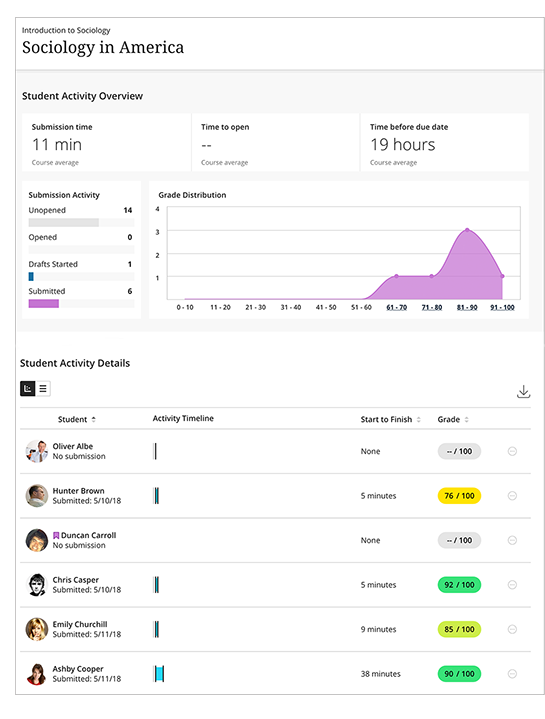Leveraging Blackboard’s Analytics for Insight into Student Activity
links
1

Instructors require robust tools to track and analyze student engagement, especially when using Blackboard to deliver and receive online assignments. Blackboard Learn offers several tools to help instructors monitor their students’ progress to inform instructional strategies and improve learning outcomes.
The Student Activity Details feature allows instructors to see precise data on student interactions with tests and assignments, including the course average submission time, time to open, time before due date, and individual submission activity.
Grade Distribution charts complement this data by showing the range of student performance. Individual activity metrics, presented in grid view or chart view, offer detailed insights into student progress. The grid view displays an Activity Timeline in a visual, box-and-whisker plot graph, facilitating the identification of outliers and trends. This view also enables direct communication with students to address academic issues or achievements.
Course Reports offer a deeper dive into student engagement with course content and collaborative tools. These reports are essential for understanding how students interact with the course material and with one another, guiding instructors to optimize content delivery and engagement strategies.
The Class Activity Dashboard presents an integrated view of grade postings and academic progress over time. This holistic perspective is crucial for assessing the overall health of the course. The Class Resources Dashboard allows students to see which parts of the course they have not yet accessed, promoting a proactive approach to their learning.
Blackboard Learn’s analytics tools are a useful tool for educators to monitor and analyze student activity effectively. These tools assist in adapting teaching methods to better suit student needs, ultimately enhancing the learning experience. As digital classrooms become increasingly central to education, the use of these tools is critical for developing responsive teaching practices and fostering a culture of continuous improvement in educational outcomes.